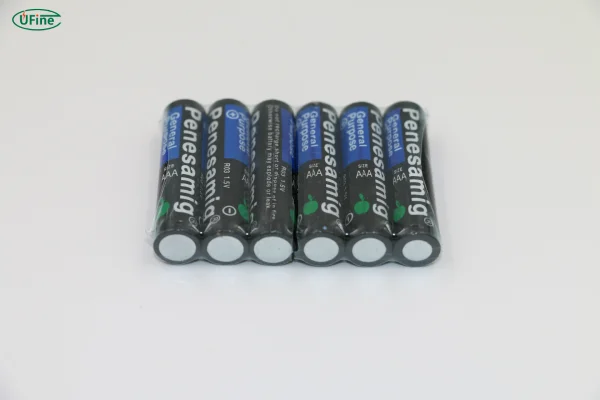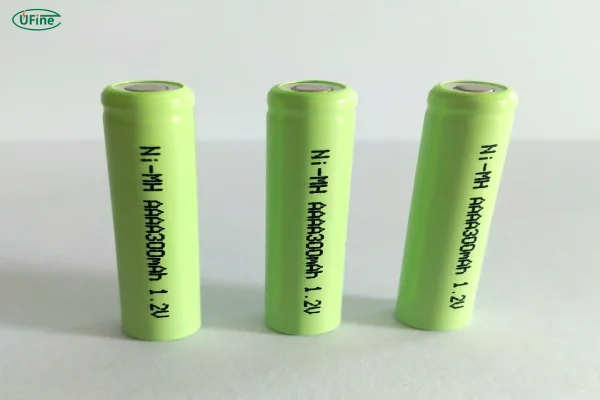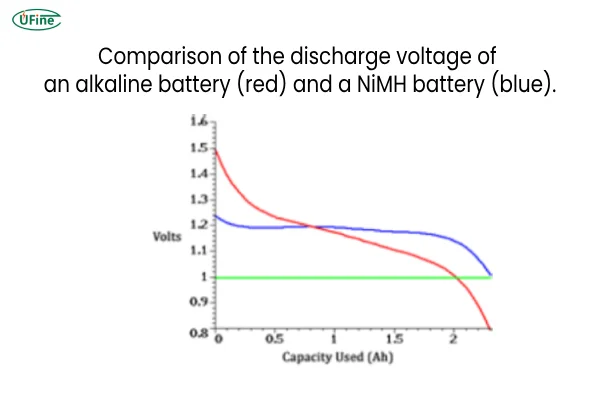
- Part 1. What does voltage mean?
- Part 2. What is the nominal voltage of AAA batteries?
- Part 3. What is the maximum voltage of AAA batteries?
- Part 4. How does voltage affect battery performance?
- Part 5. How to check the voltage of AAA batteries?
- Part 6. The voltage of AAA batteries compared to AA batteries
- Part 7. What is the voltage of AAA batteries when dead?
- Part 8. Are the voltages of all types of AAA batteries the same?
- Part 9. What kind of battery can replace AAA battery?
- Part 10. Conclusion
Part 1. What does voltage mean?
Before we dive into the specifics of AAA batteries, it’s essential to understand voltage itself. Voltage is essentially the “pressure” that pushes electrical current through a circuit. In simpler terms, think of it like the force that drives electricity through wires, powering your devices.
In the context of batteries, voltage refers to the electrical potential difference between the battery’s positive and negative terminals. Higher voltage means the battery can deliver more power to the device, and vice versa. Voltage plays a huge role in determining how much energy a battery can provide, how long it will last, and how well it can power your device.
It’s important to note that voltage is just one factor in a battery’s performance. Capacity (mAh) and the type of battery chemistry are also key players in the game.
Part 2. What is the nominal voltage of AAA batteries?
Now, let’s talk about the nominal voltage of AAA batteries. The nominal voltage refers to the standard voltage that a fresh battery will typically provide during its operation.
For most alkaline AAA batteries, the nominal voltage is 1.5V. This means that when you pop an alkaline AAA battery into your device, it will deliver around 1.5 volts of power. This is considered the “standard” voltage for AAA batteries, and it’s the voltage you’ll find in most everyday devices.
However, it’s important to note that rechargeable AAA batteries, such as those made with Nickel-Metal Hydride (NiMH), have a nominal voltage of 1.2V, slightly lower than their non-rechargeable counterparts. This difference can affect performance, as devices designed for 1.5V batteries may not work as efficiently with 1.2V rechargeable ones.
Understanding Ni-MH AAA Batteries: 13 Key Facts
Part 3. What is the maximum voltage of AAA batteries?
While the nominal voltage gives us a general idea of the battery’s performance, maximum voltage is an equally important concept to understand. The maximum voltage refers to the highest voltage a battery can provide when it’s fully charged, or at its peak capacity.
For alkaline AAA batteries, the maximum voltage is typically around 1.65V. This is the point when the battery is fully charged and in optimal condition. As the battery begins to discharge, the voltage gradually drops towards the nominal voltage of 1.5V and then continues to decline further.
On the other hand, rechargeable AAA batteries (like NiMH) start at a maximum voltage of 1.2V but maintain this steady voltage until the battery is nearly empty. This steady discharge is one of the reasons why rechargeable batteries are favored in many high-drain devices—they provide more consistent power over time.
Part 4. How does voltage affect battery performance?
Now that we’ve covered nominal and maximum voltage, let’s talk about how voltage actually impacts battery performance. Voltage directly influences how much power a battery can deliver to your device, which in turn affects how well your device performs.
-
Higher Voltage = More Power: A higher voltage means a battery can provide more electrical power, which is essential for devices that require significant energy, such as power-hungry flashlights or high-end cameras. The extra voltage gives the device the strength it needs to operate at its best.
-
Lower Voltage = Reduced Performance: On the flip side, if the voltage drops too low, your device may not function properly. You might experience dim lights in your flashlight or slower speeds in your remote control. When the voltage of an AAA battery drops below around 1.0V, the battery is considered depleted and unable to power most devices effectively.
It’s crucial to keep in mind that voltage is only one part of the equation. Capacity (measured in mAh) and current draw also play significant roles in battery performance. However, voltage is often the first indicator that your battery is running low, and it’s the key to determining how much power is left in the tank.
Part 5. How to check the voltage of AAA batteries?
If you suspect your AAA battery is losing its charge or you’re just curious about its status, you can easily check its voltage using a multimeter. Here’s how:
-
Set the Multimeter to DC Voltage: Make sure your multimeter is set to measure DC voltage, as AAA batteries are direct current (DC) sources.
-
Connect the Probes: Place the red (positive) probe on the battery’s positive terminal, and the black (negative) probe on the negative terminal.
-
Read the Display: Your multimeter will show the current voltage of the battery. A fresh alkaline AAA battery should read close to 1.5V, while a depleted battery will show significantly lower.
Checking the voltage regularly can help you manage battery life more effectively, ensuring that your devices always have the power they need.
Part 6. The voltage of AAA batteries compared to AA batteries
You might be wondering—what’s the difference between AAA and AA batteries in terms of voltage? The good news is, they are essentially the same when it comes to voltage. Both AAA and AA batteries usually provide 1.5V (alkaline) or 1.2V (NiMH), meaning they have the same electrical potential to power devices.
The key difference lies in their size and capacity. AA batteries are larger and can hold more energy, meaning they can provide power for a longer period. In contrast, AAA batteries are smaller, and therefore, their capacity is lower. This makes AA batteries a better choice for devices that require more power or longer usage, while AAA batteries are typically used in smaller, low-drain devices.
All About AA Rechargeable Batteries
Part 7. What is the voltage of AAA batteries when dead?
Once an AAA battery starts to run low, its voltage begins to drop. When the voltage of an alkaline AAA battery falls below 1.0V, it is considered dead. At this point, the battery can no longer supply enough power to operate most devices.
You might notice that your device begins to behave oddly, such as flickering lights or sluggish performance, once the battery voltage drops to this level. If your AAA battery has dropped below 1.0V, it’s time to replace it with a fresh one.
Comparison of the discharge voltage of an alkaline battery (red) and a NiMH battery (blue). The green line is the voltage at which the battery is considered dead.
Part 8. Are the voltages of all types of AAA batteries the same?
Not all AAA batteries are created equal. While most standard alkaline AAA batteries provide 1.5V, there are different types of AAA batteries, each with slightly different voltage characteristics:
- Alkaline AAA: 1.5V nominal voltage, commonly used in most devices.
- NiMH Rechargeable AAA: 1.2V nominal voltage, providing consistent performance for high-drain devices.
- Lithium AAA: 1.65V maximum voltage, offering higher energy density and longer shelf life.
Each type of AAA battery is suited to different applications, so it’s essential to choose the right one based on your device’s requirements.
Part 9. What kind of battery can replace AAA battery?
Sometimes, you might be in a pinch and need an alternative to AAA batteries. Here are some options:
- AA Batteries: In some cases, you can use AA batteries in place of AAA batteries, but you’ll need an adapter to make them fit.
- Rechargeable AAA Batteries: If you’re looking for something more eco-friendly, consider using rechargeable NiMH AAA batteries, which can be used multiple times.
- Other Sizes: If your device requires AAA for size but you need more power, C or D batteries (with proper adapters) can be used, but keep in mind that these are much larger.
Part 10. Conclusion
Understanding AAA battery voltage is crucial for ensuring your devices get the power they need when they need it. Voltage influences battery performance, lifespan, and efficiency, so always consider the voltage type when selecting batteries for your devices. By following the tips in this guide, you can confidently manage your AAA batteries, monitor their voltage, and extend the life of your devices.
Related Tags:
More Articles

The Right Way to Charge Your Li Ion Cells
Learn the correct way to charge lithium cells safely. Understand voltage limits, charging stages, and tips from Ufine Battery experts.
Best 12V Battery for Power Wheels: Types, Prices & Buying Guide
Find the best 12V battery for Power Wheels. Compare prices, brands, and features to keep your child’s ride running longer and safer.
Why Does Your Lithium Battery Drain So Quickly?
Find out why lithium batteries lose charge quickly and how to prevent fast drain with expert maintenance tips.
Understanding D Battery: A Quick Guide
What’s a D battery? Uncover essential facts you need to know. Explore its uses and tips for safe handling today.
How Long Does a Motorcycle Scooter Battery Last? Lifespan, Factors & Maintenance Tips
Learn how long a motorcycle scooter battery lasts, what affects its life, and how to extend it. Discover expert tip.





